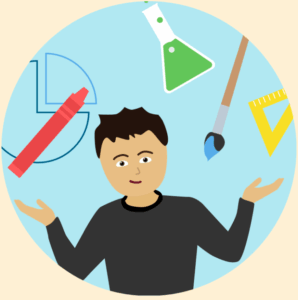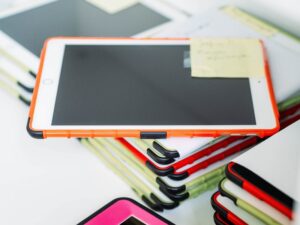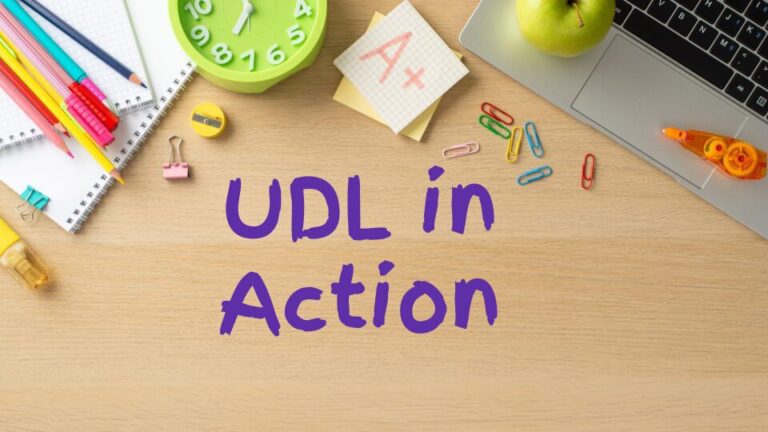Students today are digital natives–born into a world of technology that is constantly changing and ever-evolving. So how do we ensure students use it safely and to its full potential?
Teachers can play a critical role in nurturing students to go from being digital citizens to digital leaders. In our recent Learn with the Expert webinar, we welcome Julia Moskowitz, a curriculum project manager at Seasaw. In this webinar, Julia explains how teachers can safely and effectively guide students to become responsible digital citizens and exceptional digital leaders.
What does it mean for students to become digital leaders?
When we think about how immersed students are in technology in the classroom day to day, we think about our teaching tools: iPads, whiteboards, and digital media. The digital space is part of the classroom, so it’s equally important to teach students as digital citizens about safety and accountability with technology as it would be to teach them kindness and critical thinking. Therein lies a fundamental difference between how students operate as learners and consumers of technology and how they use it to drive positive change in their personal and academic lives.
“Digital leadership is really building upon digital citizenship. It’s equipping students to make informed decisions in digital spaces while they’re learning, communicating, and leading,” explained Julia. “And everyone can cultivate these leadership skills. As educators, we’re really preparing students to be digital leaders.”
The difference between digital citizens and digital leaders

Teachers can support students in becoming good digital citizens by covering safety fundamentals and responsibility. But to empower students to take charge and demonstrate critical thinking and problem solving while leveraging technology is a different task altogether. With tools, educators can simplify this type of instruction so that the concepts are approachable and even fun for students. Digital Leadership With Bean is a Seesaw lesson designed to do exactly that.
Students using this interactive lesson can engage with protagonist Bean by jumping into his life and helping him make real-world decisions. Through activities and challenges, students learn how to balance screen time, understand safety, be kind, and put situations into context.
Lessons in digital leadership for students
In a first-grade lesson demonstration, Bean is faced with a number of scenarios and the students are prompted to help him identify the most responsible choices. Students are also prompted to use multimodal tools such as the drawing tool, move tool, and microphone tool throughout the learning journey. Practice sessions can be assigned to students to complete on their own in a breakout. With an emphasis on how to care for themselves so they can care for others, students help Bean make healthy choices and witness how his behavior impacts and benefits others.
At the end of the digital lesson, students are encouraged to invite peers, parents, or friends to help them practice their newfound leadership skills in their everyday lives and reflect on their knowledge. “The final instruction at the end of the lesson allows teachers to find out what students have learned throughout that lesson,” Julia demonstrates. “Students get the opportunity to reflect on the choices they made throughout the lesson, and teachers get an assessment and insight into student understanding.” The lesson plan comes with teacher tips, instructions on how to teach the lesson in multiple formats, and where to incorporate these learnings into classroom routines.
Reinforcing digital leadership skills in real life
Teaching students these skills is a great first step, but they need to practice them in everyday life. As educators, we can reinforce digital leadership in everyday routines. Within hands-on learning and instruction, educators can reinforce principles and model healthy habits that teach students how to properly care for their device, show kindness and give constructive feedback to others. School is a safe place for students to continuously practice, make mistakes, and learn from them. The skills they learn in the classroom will then carry into their lives. Students will have further opportunity to practice skills at home and in the greater community, which reinforces foundations learned in the classroom. For this reason, Seesaw lessons come with a resource for families so they can learn digital leadership along with their child.
Conclusion

About the Author
Julia Moskowitz is a curriculum project manager at Seesaw and recent guest on Learn with the Expert webinar. In her previous role, she was a bilingual classroom teacher and K-5 Science and Integrated Technologies Instructional Specialist in Denver, CO public schools, where she focused on cultural responsiveness, computer science, and digital citizenship. Julia has a passion for empowering future digital leaders to utilize technology in a positive way.
FOR MORE, WATCH LEARN WITH THE EXPERT WITH JULIA MOSKOWITZ
Learn with the Expert: Building Digital Citizenship to Digital Leadership with Julia Moskowitz
Julia Moskowitz discusses how we can empower students to become digital leaders in the classroom!




